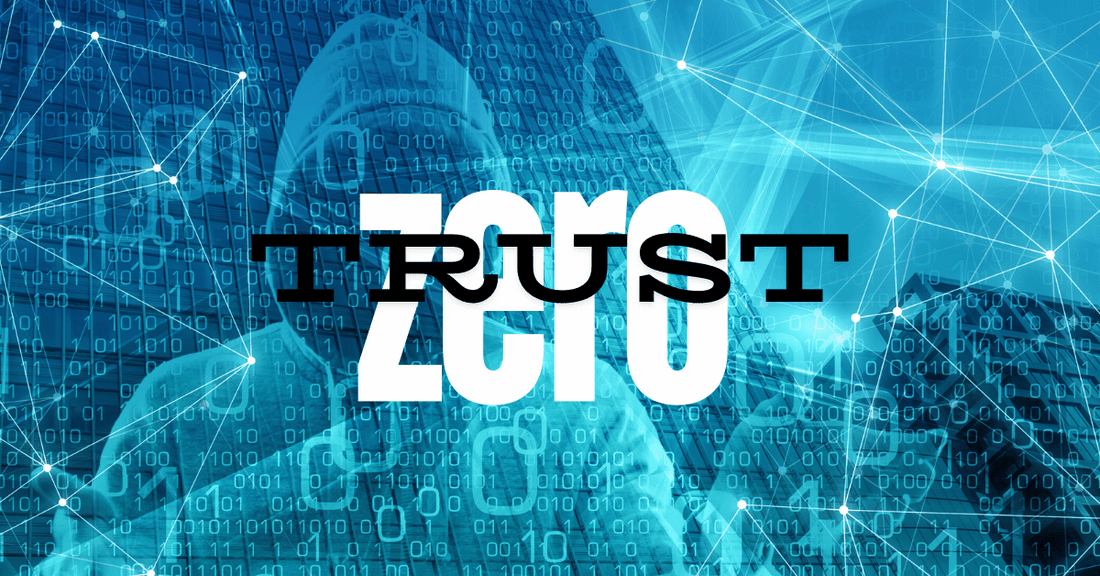
Understanding Zero Trust: A Modern Approach to Cybersecurity
In today's increasingly digital world, the traditional approach to cybersecurity is no longer sufficient. The rapid evolution of technology, coupled with the rise in sophisticated cyber threats, demands a more robust and dynamic security model. Enter Zero Trust—a paradigm shift in how we think about and implement cybersecurity.
What is Zero Trust?
At its core, Zero Trust is a security concept centered on the belief that organizations should not automatically trust anything inside or outside their perimeters and must verify anything and everything trying to connect to their systems before granting access. This model is predicated on the principle of "never trust, always verify."
The Evolution of Cybersecurity
Traditional security models operated on the assumption that everything inside an organization's network could be trusted. Firewalls and other perimeter defenses were the main lines of defense, protecting a well-defined boundary. However, this approach is inadequate in a world where:
- The workforce is increasingly mobile.
- Cloud services and SaaS applications are ubiquitous.
- Cyber threats are more sophisticated and persistent.
- Data breaches often involve insiders or compromised credentials.
In this landscape, a breach is not a question of "if" but "when."
Core Principles of Zero Trust
1. Verify Explicitly: Zero Trust requires verifying all access requests, regardless of where they originate. This involves using various data points such as user identity, location, device health, and more to ensure that the request is legitimate.
2. Use Least Privilege Access: The principle of least privilege dictates that users should have the minimum level of access necessary to perform their job functions. This limits the potential damage in case of a breach, as attackers cannot move laterally across the network with elevated privileges.
3. Assume Breach: Zero Trust operates on the assumption that the network is already compromised. This mindset encourages continuous monitoring, real-time risk assessments, and automated responses to mitigate threats swiftly.
Implementing Zero Trust
Implementing Zero Trust is not a one-size-fits-all process but involves several key steps:
1. Identify Protect Surfaces: Determine the most critical data, assets, applications, and services (DAAS) that need protection. Unlike traditional models focusing on wide perimeters, Zero Trust hones in on these protect surfaces.
2. Map Data Flows: Understanding how data moves across your network is essential. This involves mapping out how users and applications interact with each other and with the protect surfaces.
3. Create Microsegmentation: Microsegmentation involves dividing the network into smaller, isolated segments to limit an attacker's ability to move laterally. Each segment is protected with its own set of security controls.
4. Continuously Monitor: Zero Trust requires ongoing monitoring and analysis of network traffic, user behavior, and access patterns. This continuous visibility helps in detecting and responding to anomalies in real time.
5. Automate Response: Given the speed and scale of modern cyber threats, automation is crucial. Automated responses to identified threats can mitigate damage before human intervention is possible.
Benefits of Zero Trust
1. Enhanced Security Posture: By verifying every access request and limiting privileges, Zero Trust significantly reduces the attack surface and enhances overall security.
2. Improved Compliance: Many regulatory frameworks now emphasize data protection and privacy. Zero Trust aligns with these requirements, helping organizations maintain compliance.
3. Adaptability: Zero Trust is designed for today's dynamic environments, accommodating cloud services, remote work, and evolving cyber threats.
4. Resilience: Assuming a breach and preparing accordingly makes organizations more resilient, reducing the impact and recovery time of cyber incidents.
Challenges to Consider
While Zero Trust offers numerous advantages, it is not without challenges. Implementing a Zero Trust architecture can be complex and resource-intensive. Organizations may face hurdles such as:
- Integrating legacy systems.
- Ensuring user buy-in and training.
- Maintaining performance and user experience.
- Continuously updating policies and controls to adapt to new threats.
Conclusion
Zero Trust represents a fundamental shift in how we approach cybersecurity. By moving away from the flawed trust-based models of the past, it offers a robust framework to protect against the myriad of threats facing modern organizations. While the journey to Zero Trust can be challenging, the enhanced security, compliance, and resilience it provides make it a worthwhile investment for the future.
Adopting Zero Trust is not just a technical change but a cultural one, requiring a commitment to ongoing vigilance and adaptation. As cyber threats continue to evolve, so too must our strategies to combat them. With Zero Trust, organizations can navigate the complexities of today's digital landscape with confidence and assurance.
